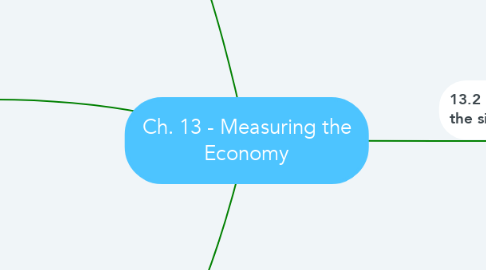Ch. 13 - Measuring the Economy
by Ian Berg

1. What Does the Unemployment Rate Tell Us About an Economy’s Health?
1.1. Like GDP, the unemployment rate is a good indicator of the health of the economy. a high unemployment rate means the overall health of the economy is poor.
1.2. Frictional unemployment is when workers are seeking their first job or have left one job and are seeking another
1.3. Structural unemployment is when the demand for certain skills declines, often because of changes in technology or increased foreign competition; under such conditions, workers may need retraining to find new jobs
1.4. Seasonal unemployment is when businesses shut down or slow down for part of the year, often because of weather
1.5. Cyclical unemployment results from a period of decline in the business cycle
2. What Does the Inflation Rate Reveal About an Economy’s Health?
2.1. The inflation rate is the percentage increase in the average price level of goods and services from one month or year to the next.
2.2. A price index measures the average change in price of a type of good over time. The consumer price index is a price index for a market basket of consumer goods and services.
2.3. The cost in current dollars of all the basic goods and services that people need is the nominal cost of living. Like the nominal GDP, the nominal cost of living is based on current prices.
2.4. The real cost of living is the nominal cost of basic goods and services, adjusted for inflation.
3. How Does the Business Cycle Relate to Economic Health?
3.1. A period of economic growth is known as an expansion. During this phase of the business cycle, economic activity generally increases from month to month.
3.2. The point at which an expansion ends marks the peak of the business cycle. At that peak, economic activity has reached its highest level.
3.3. Following the peak comes the contraction phase of the business cycle. A contraction is a period of general economic decline marked by a falling GDP and rising unemployment.
3.4. The lowest point of a contraction is called the trough. Like the peak, the trough marks a turning point. Once the economy hits bottom, a new expansion begins.
4. 13.2 How do Economists measure the size of the Economy?
4.1. GDP measures a country's economic growth by measuring their economic output. GDP is the market value of all final goods and services produced within a country during a given period of time.
4.2. Economists measure GDP by dividing the economy into four sectors: household consumption(C) Business investments(I) Government purchases(G) Net exports minus imports(NX) C+I+G+NX=GDP
4.3. Using the GDP formula yields what economists call Nominal GDP. Nominal GDP measures the output of an economy valued at today's prices, or in current dollars. Current dollars is the value of a dollar in the year it is spent, this reflects the purchasing power of the dollar at that time.
4.4. To compensate for the effects of inflation,economists use real GDP which measures the output of an economy not in current dollars, but in constant dollars. Constant dollars is the value of a dollar from a specific fixed base year which yields a value of the dollar adjusted for inflation.


